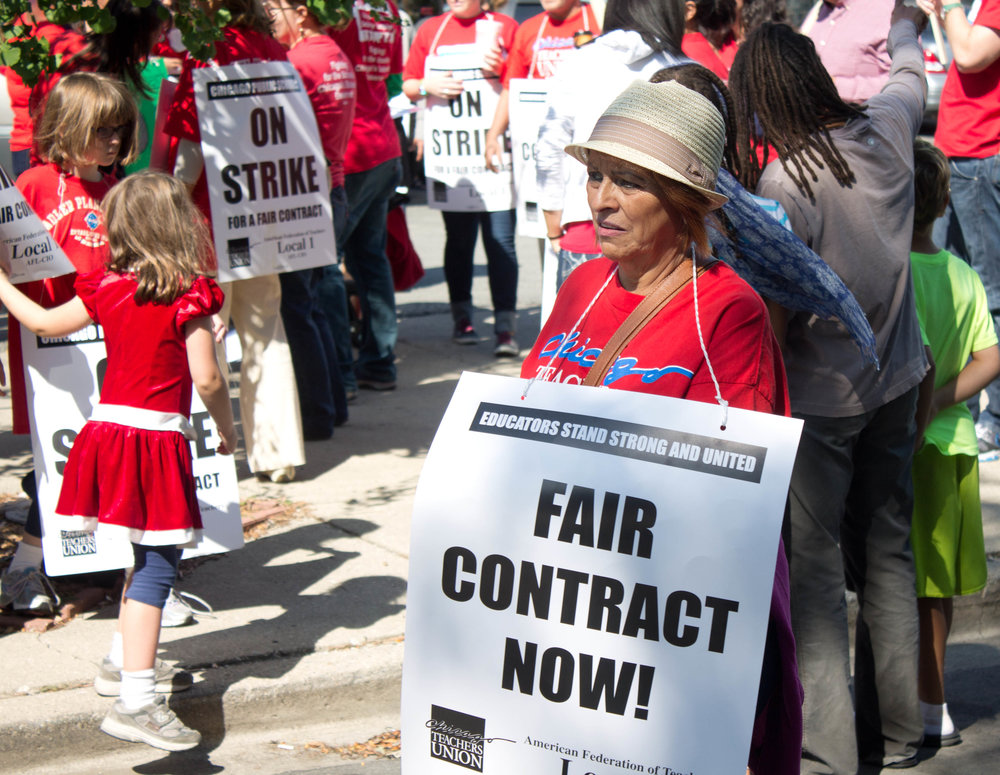Out-of-home advertising (OOH) — also known as outdoor media — is the marketing you see…
Hey Advertisers, Here’s a Lesson: Teachers Are Changing the Game from the Grassroots Up
From Virginia to Kentucky and Oklahoma. Onward to Arizona and Colorado. Nationwide, teachers are streaming out of classrooms, demanding higher pay and educational resources.
“In Oklahoma, where teacher pay is among the lowest in the nation, students are forced to use textbooks that are outdated and falling apart; school buildings often lack air conditioning and heat; and in several districts across the state, schools are open only four days a week,” wrote Harold Meyerson in The Nation.

Mobilizing through social media, “teachers have leapt beyond law and formal organization to press their case,” wrote The Nation’s Meyerson. Said Noah Karvelis (@Noah_Karvelis), a teacher and organizer of Arizona Educators United: “We simply can’t take it any longer.”
The unrivaled series of statewide walkouts have closed public schools and affected hundreds of thousands of students. More than 60,000 people were expected to remain on strike this week despite scorching temperatures in Arizona and state Senate legislation in Colorado threatening striking teachers with jail time.
Coming hot on the heels of the Women’s March, March for Science, and March for Our Lives, it feels as if the whole country is taking to the streets. But it’s not just the streets they are taking to: grassroots activists have moved online, using social media to organize demonstrations, generate support, and move the bar on issues such as education and gun control.
In the absence of strong union leadership, once the primary driver of education strikes, teachers are making their case and coordinating with colleagues statewide via social media efforts such as the #RedForEd movement by Arizona Educators United; #55strong in West Virginia, where a secret Facebook group for public employees grew to include 24,000 members; and Facebook group “Oklahoma Teacher Walkout — The Time is Now,” which now has more than 67,000 members.
Ed Allen, President of the Oklahoma City chapter of the American Federation of Teachers, said negotiations between lawmakers on one side and teachers on the other was unlike anything he’s ever seen in his 26 years with the union. In an interview with NPR, he asked “How do you negotiate with Facebook?”
So far, the strikes have resulted in a 5 percent pay raise for teachers in West Virginia and increased education spending in Kentucky and Oklahoma. The long-term impact of this year’s protests remains unclear.
If advertisers understood the importance of social media before, the protest marches and unprecedented string of teacher strikes provide even more confirmation of digital media’s critical role — when used well — in engaging an audience and shaping public discourse from the grassroots up.
K-12 education is a particularly tricky industry for advertisers. It’s one of the two largest industries in the US – comparable with healthcare – accounting for 7.2% of the nations GDP and the largest employer in every state, but spends only a fraction on advertising compared to other industries, according to Forbes.
As grassroots activism surges, agencies have a unique opportunity for developing innovative tools to engage teachers and reposition the industry; working directly with groups like Education Funding Partners, a public-private partnership that helps companies run digital advertising on school district and school websites at no cost to districts.
Possibilities include taking a page from Marvel’s Black Panther marketing approach, which held hundreds of events organized by black filmgoers nationwide to celebrate the film’s February opening and provided screenings for kids. Or Patagonia, whose marketing strategy focuses on environmental grassroots activism. For more than two decades, the company has hosted a Tools For Grassroots Activists Conference, book, podcast series, and increasingly tied its branding to initiatives like the New Localism campaign.
“The cool thing about [this approach], rather than feeling scattershot, it all really ties back to this core strategy we have to support the grassroots, where so much of the real change happens, and to share the message of what’s happening at that grassroots level as far and wide as we can,” Hans Cole, Director of Patagonia’s Environmental Campaigns and Advocacy, told Fast Company in February 2016.
With no end to protests in sight, this lesson seems more timely than ever.



